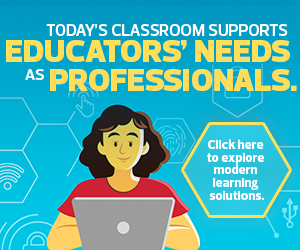Active Learning Efficacy with Laptops, Tablets and Paper
A look at the three primary note-taking options for students — typing on laptops, writing on tablet devices with a stylus, and using a simple pen and paper — reveals the essential benefits and challenges of each in supporting active learning.
Laptops: Typing on a laptop is fast, notes are easy to share, and backups are available if the notes get destroyed or lost. The downside of note taking on laptops is that students often type their notes mechanically, which leads to the lowest learning retention rate.
Digital Tablets: In response to the pandemic, more schools have provided tablets to students. California alone has made internet-enabled tablets available to nearly 1 million students. Tablets are portable and easy to use, even for young children, and notes made on tablets can be backed up and easily shared. Content organization and editing can be customized, and apps and programs are available to encourage creativity.
READ MORE: Educators use technology to expand learning opportunities.
Paper: This “technology” is how students have taken notes for centuries, so the methods and formats are deeply ingrained in the educational system. The efficacy of writing notes on paper has been extensively researched, and the results show this method provides high retention rates. Note taking on paper is also inexpensive, portable, flexible and less affected by distractions. On the other hand, notes on paper are easily lost or damaged, content is difficult to correct and customize, and the format can’t be integrated with digital resources or links.
5 Digital Note Taking Strategies for Active Learners
The true benefit of any note-taking technology comes down to whether the tool engages students in active learning. Note taking as a form of active learning encourages students to pay attention by watching, listening to or reading content and then actively processing the information. Students use their notes to take personal ownership of the information no matter how the information takes shape — through words, pictures, charts, diagrams, annotations or other methods.
Technology has expanded the boundaries of note-taking tools while retaining their learning benefits. For example, the use of styluses on tablets and Chromebooks adds new options for taking notes. Styluses also help students overcome some of the challenges they face with learning while using these devices. Whether it’s the passive note taking on laptops, the difficulty of finger writing on tablets or even the tendency of paper to get lost or damaged, innovative tools provide new solutions.
DISCOVER: Experts at CoSN2022 share accessible and inclusive learning solutions.
There are a number of ways for students to engage in active learning with the support of these tools.
1. Enlarge the context for learning: With digital tools, students can simultaneously record a lecture, include links to presentation slides and easily connect the dots between past and current lessons.
2. Copy visual cues: Visual cues can include diagrams, graphs and charts or a subject outline. When students annotate or sketch these visual aids, they can better remember the emphasis on certain concepts and ideas.
3. Develop handwriting skills for active learning: Handwriting has been linked to reading readiness, better composition skills and greater academic achievement. For younger students especially, note-taking tools like digital styluses allow learners to develop and strengthen their handwriting and fine motor skills while interacting with technology.
4. Take advantage of pauses: When educators take pauses during direct instruction, students can review and rework their notes. During these pauses, students using digital tools can easily add, move or edit sections of their notes.
5. Easily access information: Educators can aid students’ note-taking efforts by providing handouts for them to follow during class. If digital note taking is encouraged in class, these handouts can be digitally distributed and easily opened in tablets. Students can write directly on the worksheet with a stylus, a process that has been shown to help students learn and retain information.
Digital note taking can spark new learning opportunities for K–12 students, combining the benefits of taking notes by hand for active learning and technology integration in today’s modern classroom environment. Digitally transformed note-taking strategies help educators build essential handwriting skills, encourage active learning and support greater student success.
MORE ON EDTECH: Digital transformation starts with forward-thinking K–12 leadership.










